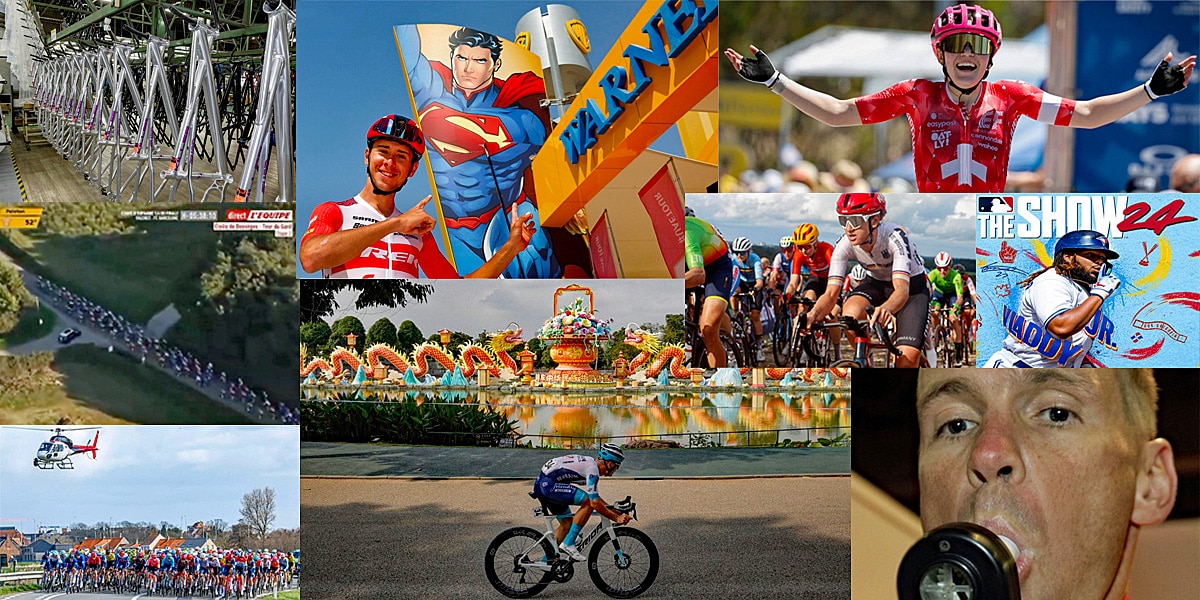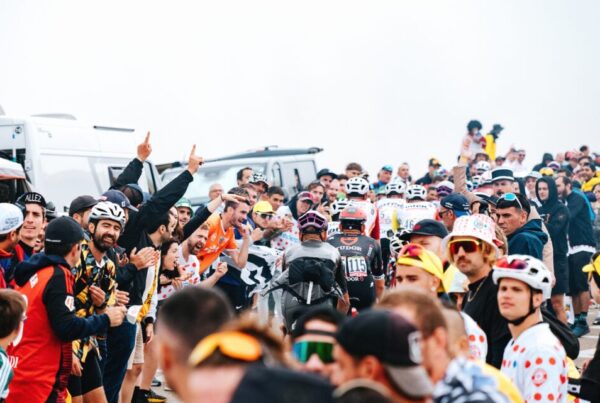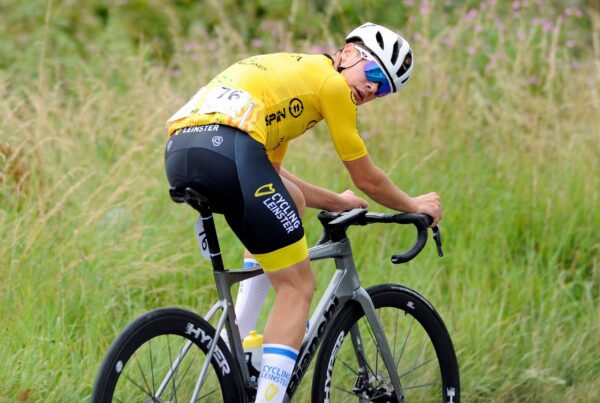
.
.
.
#Womens #Sport #Turning #Point #Rules #Safety #Concerns #Tariffs #Bike #Industry #Race #Attendance #Requirements #Budget #Caps #PezCycling #News
Source link
Summarize this content to 500 words:
In this week’s AIRmail newsletter, The Outer Line takes an in-depth look at trending cycling news: Women’s sport at a turning point, more on CO rules, continuing safety concerns, impact of tariffs on bike industry, double whammy of race attendance requirements and budget caps.
# Catch up on pro cycling – and its context within the broader world of sports – with AIRmail … Analysis, Insight and Reflections from The Outer Line. You can subscribe to AIRmail hereand check out The Outer Line’s extensive library of articles on the governance and economics of cycling here. #
Key Takeaways:
Reaching a Tipping Point in Women’s Sport
Clarification on Carbon Monoxide Rules
De Bessèges
Tariff Impacts on Bike Industry?
Combined Impact of Racing Requirements and Budget Caps?
Optimal TV Broadcasting Models
Women’s sport ‘on the cusp’
Women’s sports are on the cusp of a widespread socio-economic tipping point, with women’s tennis legend Billie Jean King summing up the momentum this weekend in one word: “investment.” King sees the current trend of “billionaires, not millionaires,” as the primary investment driver moving women’s sports. The cautionary demise of Manchester United – which continues to lose value and prestige after a $1.5 billion minority share was secured by INEOS cycling team owner Jim Ratcliffe – sits in stark contrast to the rapid rise in value of every major professional women’s soccer club, particularly those in the U.S. NWSL and the British Women’s Super League. The continued growth and cultural influence of the WNBA and women’s tennis adds to the frenzy, driving up media licensing deals and sponsorship bids.
What does it mean for women’s cycling?
All of this begs the question of when women’s professional cycling might join the investment rush towards parity with men’s cycling? The Women’s WorldTour is flush with sporting excellence; some of the world’s best athletes, brand ambassadors, and thought-leaders are contributing to the sport’s growth from inside the peloton and – to a degree – in team management. However, the WWT’s sporting structure and “licensing” may be too closely modeled after the men’s WT – too many independent-minded race organizations, too few dealmakers to broker unification, and the big elephant in the room, ASO, which may potentially see its superior business positioning disrupted. But with a new wave of billionaires seeking women’s sports as an investment vehicle, could breakaway events like those championed by King for women’s tennis in the 1970s happen for women’s cycling in the late 2020s?
The women’s season started in Australia
The 2025 women’s calendar kicked off in two directions, with WWT teams contesting the Tour Down Under and then shifting gears to race in the Middle East while the European cyclocross calendar wrapped up with the World Championships and this past weekend’s Superprestige finale. With the WWT teams now obliged to field squads across an insanely long calendar bloated by logistical burdens, there is growing concern that travel fatigue could blunt the efforts of many top riders leading into the first phase of the classics season – and beyond. Juxtaposing all of this activity around the investment groundswell and growing demand for women’s sports content, one wonders just how much money the sport is leaving on the table by not promoting these early WWT races more broadly and prominently, given the relative stagnation and disruption in men’s cycling content distribution.
No more CO rebreathing – Before Dekker’s time
The UCI racked up an uncharacteristic win when it quickly drafted and implemented thoughtful restrictions on the budding practice of carbon monoxide rebreathing. Pressure on the sport’s governing body to act was ratcheted up when two-time Tour de France champion Jonas Vingegaard controversially suggested in a recent interview that the practice of carbon monoxide rebreathing – normally used to judge the effectiveness of training camps by measuring a rider’s hemoglobin mass – is being used by teams and riders to enhance performance (it should be noted that Vingegaard’s comments weren’t followed by any specific pieces of evidence). The updated rules have been incorrectly referred to as a ban; they are instead limitations that “prohibit the possession, outside of a medical facility, of commercially available CO rebreathing systems connected to oxygen and CO cylinders.” In fact, riders will still be allowed to perform the practice under medical supervision to measure hemoglobin, but with a second inhalation allowed only two weeks after the first measurement. A recent piece in The Economist suggested that repeated use of the practice could lead to a roughly 5% increase in the amount of hemoglobin in a rider’s blood and a 3% increase in their VO2 max. While not as controversial as 1997’s 50% hematocrit “edict,” the new rule appears to be timely – restricting a legitimately unhealthy yet effective performance enhancing practice with practical and enforceable guidelines.
Utter chaos in Bessèges
While the UCI’s handling of carbon monoxide rebreathing may have been a victory for simple and concise action, its failure to provide even the most basic of safety conditions at Etoile de Bessèges over the weekend seemed to be a return to the mean for the governing body. The historic five-stage race in Southern France produced a few moments of interesting racing, with Arkéa-B&B Hotel’s Kévin Vauquelin winning the final two stages and the overall title. However, the horrendous and dangerous failure by race organizers to provide a consistently closed racing course completely overshadowed the racing. Through the first three stages, automobile traffic made its way onto the course, at times moving directly into the peloton, with Red Bull-Bora-hansgrohe’s Maxim Van Gils being sent to the hospital on Stage 3, and several of the top teams deciding to leave the race altogether. In the end, just 64 riders remained – presumably to suck up the valuable and suddenly more attainable UCI points. Luckily, no riders lost their lives due to peloton counterflow in open traffic, but the completely unacceptable situation highlighted inexcusable gaps in the UCI safety protocols. The desire to keep these traditional events on the calendar may be noble, but if it comes at the expense of a fully closed course, the events cannot be allowed to retain their UCI sanction, however unfortunate that may be for the organizers or host region.
Teams can’t avoid Guangxi every year
While most of the attention in professional road cycling has been on the cluster of early-season races, WorldTour team managers are quietly fretting about looming changes to WorldTour calendar slated to take effect in 2026 that will make all but a single WorldTour event mandatory for all WorldTour teams. These new regulations differ significantly from the current guidelines, which allow WorldTour teams to opt out of any WorldTour race added to the calendar after 2017. Teams without direct business interests in locations where these newer races take place generally take advantage of this clause by either passing on the invitation or negotiating a higher start fee from organizations to help them offset the costs of making the journey. Lidl-Trek’s Team Manager Luca Guercilena pointed out in a recent interview that these changes mean that teams will lose nearly all negotiation leverage with organizers due to being forced to race, and, as a result, will likely lose money lining up for events that offer them little business utility – especially if their sponsors receive no broadcast exposure in their home markets due to pro cycling’s severe media distribution gaps. At the same time, the UCI is internally outlining plans to implement spending caps on teams which, if actually implemented, could mean that the UCI would be significantly squeezing teams by forcing them to spend more while also constricting their total budgets. (There are some seemingly existential questions here that we will delve into in coming weeks.)
What do Trump’s tariffs mean to the bike industry?
The struggling international bicycle industry is bracing for the impacts of the proposed Trump administration tariff policy. In a thorough summary of the situation, Bicycle Retailer underscores the significance of the proposed increase in tariffs on Chinese products, noting the fact that the U.S. gets almost 90% of its bikes from China. However, in terms of value, the proportion is more like 50%, since many of the bikes imported from China are kid’s bikes or lower-end models, with higher-end models typically coming now from Taiwan or other southeast Asian countries. Over the longer-term, this could encourage more domestic manufacturing, but that takes time to plan and build out; at this point, it’s not clear how long such tariffs might be in force, since the administration seems to be utilizing them as threats to achieve other political or diplomatic goals, rather than as pure trade or economic instruments. Although some bike manufacturers have talked about relocating to Mexico, given its low labor costs and previously favorable trade terms with the U.S., so far that has generated more talk than action. And although it is too early to make any predictions, expected retaliatory tariffs could impact various domestic manufacturers of cycling-related products, in terms of their export market potential.
Baseball media problems
On the topic of media licensing rights and distribution, Major League Baseball and its various regional sports networks (RSNs), national broadcasters, streaming service partners, and even local rights holders are providing a microcosm of “survival of the fittest” economic strategies for the sports content marketplace. A significant uptick in baseball viewership after several down years may have stabilized some of the more distressed RSN providers like Main Street Sports (formerly, Diamond Sports Group), which is infamously emerging from its bankruptcy by clutching onto its most prized rights like those of the Atlanta Braves and New York Yankees and pivoting to an Amazon streaming partnership. Similarly, other teams have decided to cast their lot with MLB’s home-grown streaming service and a slate of nationally televised games licensed by ESPN. And a third maverick path is being forged by some teams like the Texas Rangerswho will self-broadcast and distribute across all media platforms, thus avoiding licensing revenue stream disruptions which befell the RSN model. In each path, the team – whether small market or large market – has independently judged the value of the sports content exclusivity against the potential financial impact to fans in their home market and acquiring new fan revenue streams outside of their market.
Warner not helping the cycling fans
Pro cycling, as we’ve discussed before, is rapidly approaching a reckoning in its television coverage. The key question is whether the exclusivity cost – where the most valuable races sit behind a subscription paywall in a larger, more expensive package subscribed to by a smaller number of existing fans – has more overall benefit than the situation where the content is freely available to a much larger base of potential fans? And it remains to be seen if the controversial Warner Bros. Discovery ‘experiment’ of placing cycling along other high-value, high viewership sports properties will cross-pollinate new fan interest. Given the aging demographics in cycling viewership – at least for the men’s WT and grand tours, and especially in those races’ home markets – a change in strategy may be needed before the sport’s economics go completely upside-down: more money being sunk into it than its sponsors and stakeholders can extract out of their investments.
What will happen to cycling TV viewing figures?
# Catch up on pro cycling – and its context within the broader world of sports – with AIRmail … Analysis, Insight and Reflections from The Outer Line. You can subscribe to AIRmail hereand check out The Outer Line’s extensive library of articles on the governance and economics of cycling here. #
Like PEZ? Why not subscribe to our weekly newsletter to receive updates and reminders on what’s cool in road cycling?







